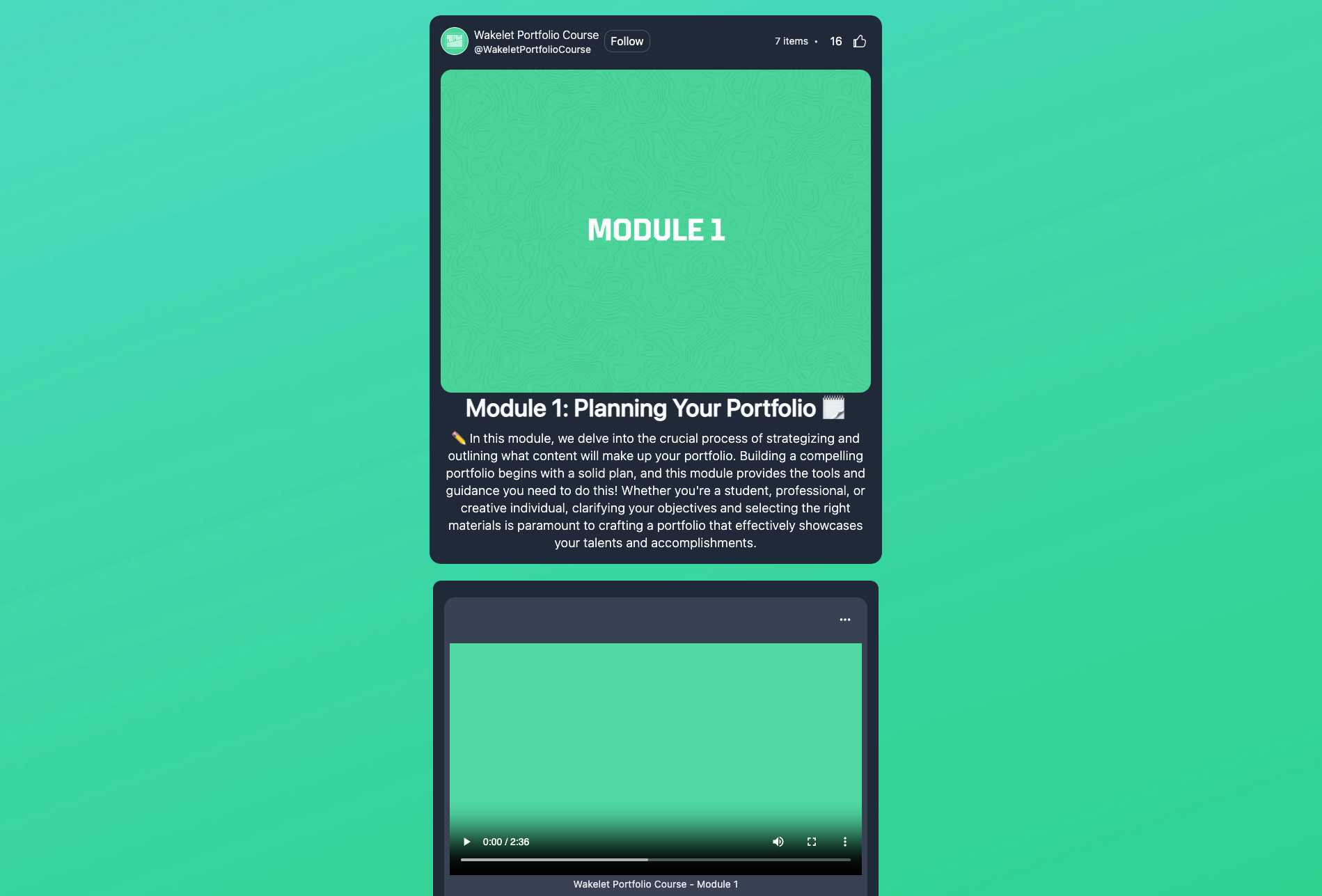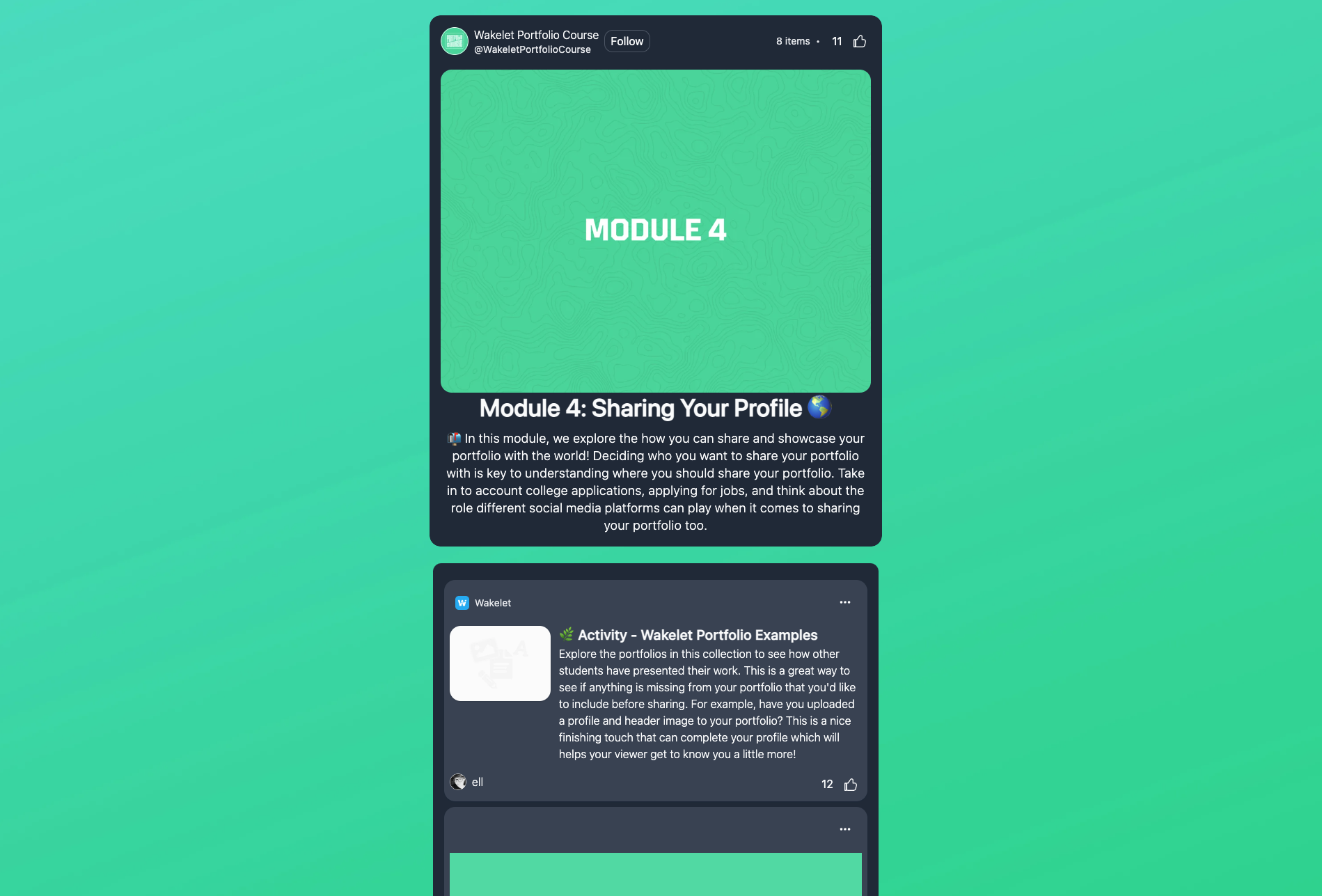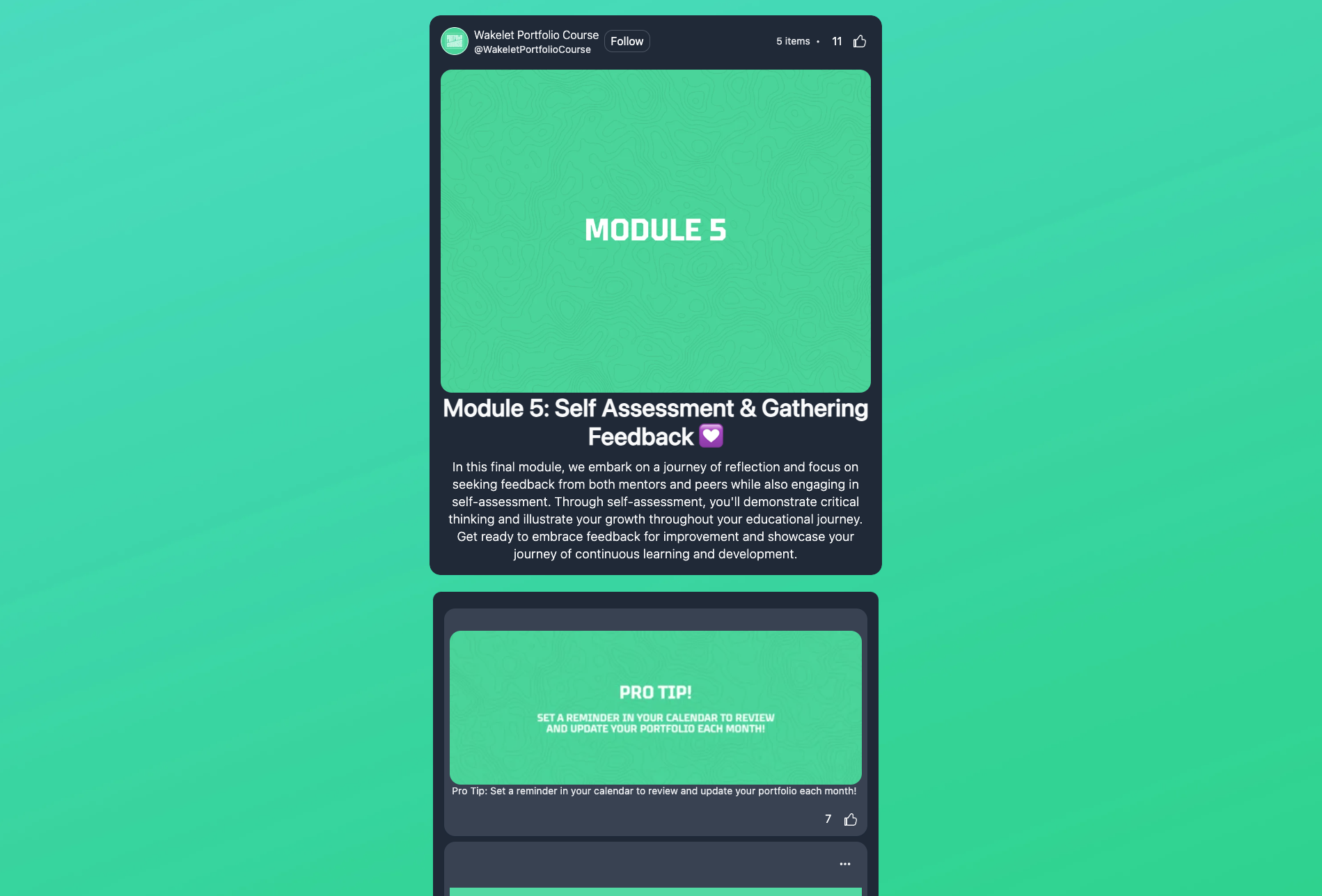
Creating a student digital portfolio is essential in showcasing your classroom achievements, skills, and personal development. Whether applying for college, or internships or simply wanting to document your educational journey, a well-crafted portfolio can set you apart from the crowd. In this ultimate guide, we’ll walk you through everything you need to know to create an impressive student portfolio on Wakelet.
1) Planning Your Portfolio
Before diving into the technical aspects of creating a portfolio on Wakelet, it’s crucial to start with careful planning. Ask yourself what the primary goal of your portfolio is—are you showcasing your academic achievements, demonstrating your skills for potential employers, or documenting your personal growth?
Defining your objectives will guide your decisions on what to include in your portfolio. Next, identify the key themes or categories that your portfolio will cover, such as projects, assignments, extracurricular activities, or personal reflections. This will help you structure your portfolio in a way that is logical and easy to navigate.
Consider the audience for your portfolio, as this will influence the tone, content, and design. For example, a portfolio aimed at college admissions officers might focus on academic achievements and leadership roles, while one intended for a job application might highlight specific skills and professional experiences. Sketch out a rough outline of your portfolio, listing the collections you plan to create and the types of content you will include in each.
This planning phase is essential for creating a cohesive and compelling portfolio that effectively communicates your strengths and experiences.
Once you’ve mapped out your portfolio, it’s time to start creating your collections on Wakelet. Collections are the building blocks of your portfolio; they group related content, making it easier for viewers to explore your work.
Begin by creating a new collection for each theme or category you identified during the planning phase. For example, you might have separate collections for “Academic Projects,” “Volunteer Work,” “Creative Writing,” and “Extracurricular Activities.” Within each collection, you can add various types of content, such as text descriptions, images, videos, links, and documents.
To make your collections engaging, focus on curating high-quality content that showcases your best work. Write clear and concise descriptions for each item, explaining what it is, why it’s significant, and what you learned from the experience. You can also include reflections or insights to provide context and demonstrate critical thinking.
Wakelet allows you to customize the appearance of your collections with cover images and background colours, so take advantage of these features to create a visually appealing and cohesive look. The goal is to create collections that not only highlight your accomplishments but also tell a story about your journey and growth.
3) Organizing Your Collections and Profile
After creating your collections, the next step is to organize them to enhance the overall flow and readability of your portfolio. Start by arranging your collections in an order that aligns with your portfolio’s objectives and the narrative you want to present. For example, you might lead with your strongest work or the most relevant content to your intended audience. Wakelet’s drag-and-drop interface makes it easy to reorder collections and move items around within collections as needed.
Beyond organizing your collections, it’s also important to set up your Wakelet profile. Your profile acts as the introduction to your portfolio, so make sure it is complete and professional. Upload a clear and friendly profile picture, write a brief bio that summarizes who you are and what you’re passionate about, and include links to any other relevant online profiles, such as LinkedIn or a personal website.
Pay attention to the small details, like making sure your collections have consistent titles and that your profile information is up to date. A well-organized portfolio and profile not only make a great first impression but also make it easier for viewers to find and engage with your content.
4) Sharing Your Profile
With your collections created and organized, the next step is sharing your Wakelet portfolio with the right audience. Wakelet makes it simple to share your portfolio in various ways, depending on your needs. You can generate a shareable link to your profile or individual collections, which can be included in emails, resumes, or online applications. Alternatively, you can share your portfolio directly on social media platforms like Twitter, LinkedIn, or Facebook, making it easy to reach a broader audience.
When sharing your portfolio, consider customizing the privacy settings for each collection. Wakelet allows you to choose between public, unlisted, or private settings, giving you control over who can view your content. For instance, you might keep certain collections private or unlisted if they contain sensitive information or are still a work in progress.
Before sharing, take a moment to review your portfolio as a whole to ensure it reflects the image you want to project. Remember that your portfolio is a dynamic tool that can be updated and refined over time, so don’t hesitate to make adjustments as needed based on the feedback you receive.
5) Self-Assessment and Gathering Feedback
Creating a portfolio is an ongoing process, and self-assessment is key to ensuring that your portfolio continues to reflect your growth and goals. After sharing your portfolio, take some time to step back and review it from an objective perspective. Ask yourself if the content is relevant, well-organized, and visually appealing. Does it effectively communicate your strengths and experiences? Consider how your portfolio aligns with your initial objectives and whether any adjustments are needed to better meet those goals.
In addition to self-assessment, gathering feedback from others is invaluable. Share your portfolio with teachers, mentors, peers, or professionals in your field and ask for their honest opinions. They can offer insights into areas you might have overlooked, suggest ways to improve the presentation of your content, or highlight strengths you didn’t realize you had.
Use this feedback to refine and enhance your portfolio, making it an even stronger tool for achieving your academic and professional aspirations. Remember, a great portfolio is never static—it evolves as you do.




